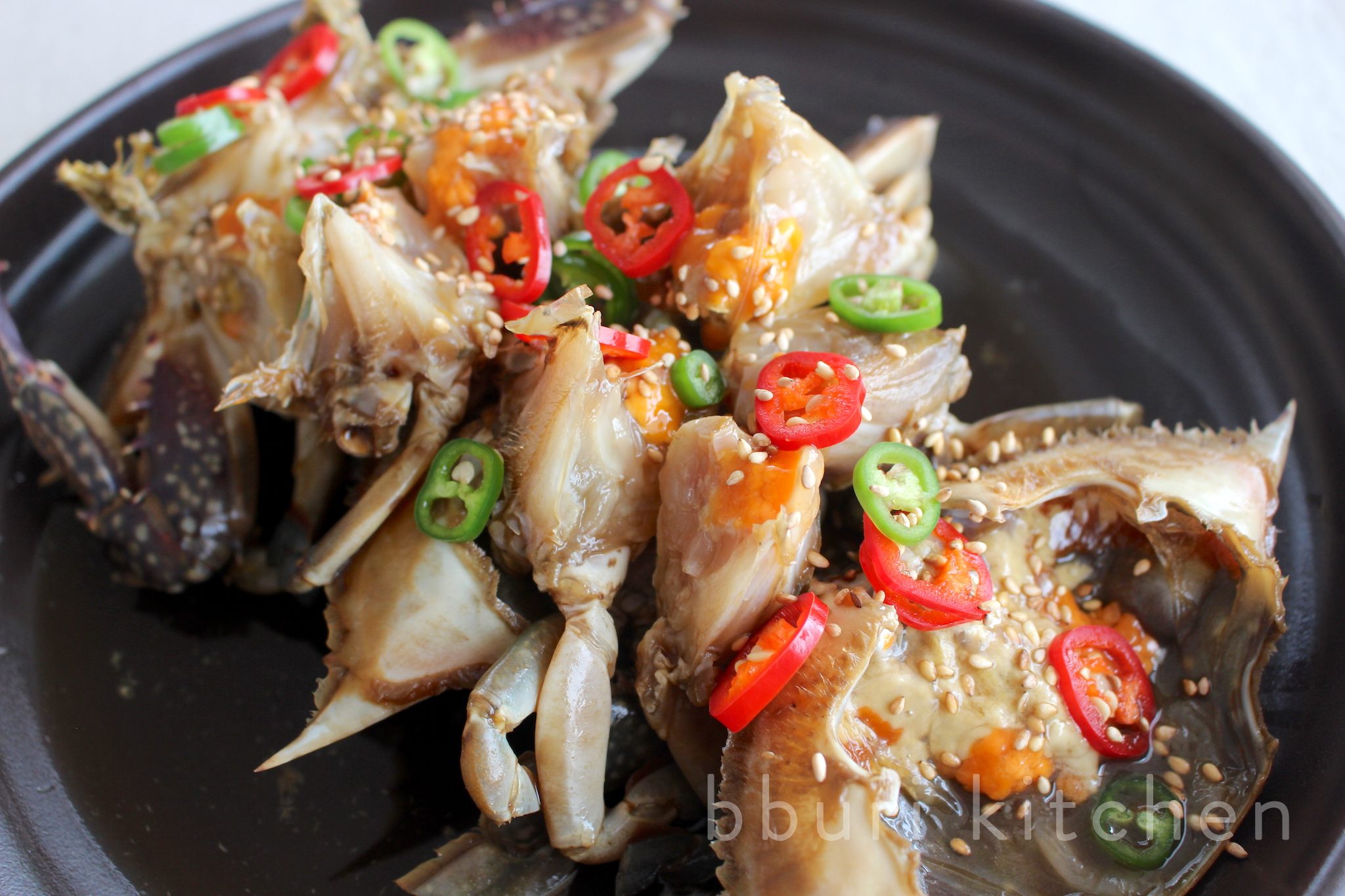There’s a reason why ganjang gaejang (간장게장) is one of the side dishes we call 밥도둑 (bap doduk), or “rice thief” in Korean.


seasonal korean cooking
I love all of the bomnamul (봄나물, spring greens) that come out in the markets after winter: There are so many, and they’re all so fresh and delicious.
In Korea, a cold winter wind is a sign of many things, but one thing is for sure: Mu (무, Korean radishes) are getting sweeter and tastier, and it’s finally the right season for oysters again.
Nogak (노각), or old cucumber, is a cucumber that is aged on the vine until it develops a thick, golden skin and crunchy flesh.
Back in the day, every household would make their own jang, those essential fermented condiments that season just about every dish in Korean cuisine.
It was a busy week at the Bburi studio—right after wrapping up a private cooking class at Mangwon Market, we got a call from Magpie Brewing.
Gae-tteok (개떡) is an easy rice cake made with fragrant green herbs.
It’s not a well-known fact that tangpyeongchae (탕평채, mung bean jelly salad) is a traditional food for Ipchun (입춘), the first day of spring.
Please note: Cooking classes are temporarily on hold until further notice. If you’d like to be updated, please follow us on Facebook and Instagram, or email us with the subject line “Cooking Class Updates.”
Seomcho (섬초, also called pohangcho, 포항초) is a wonderfully sweet, delicious winter spinach.